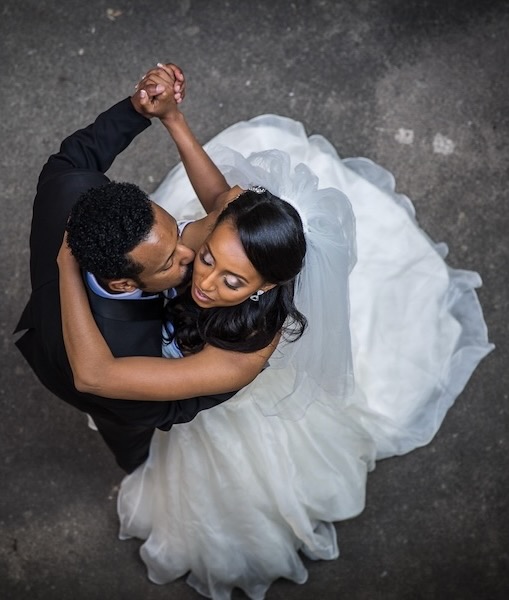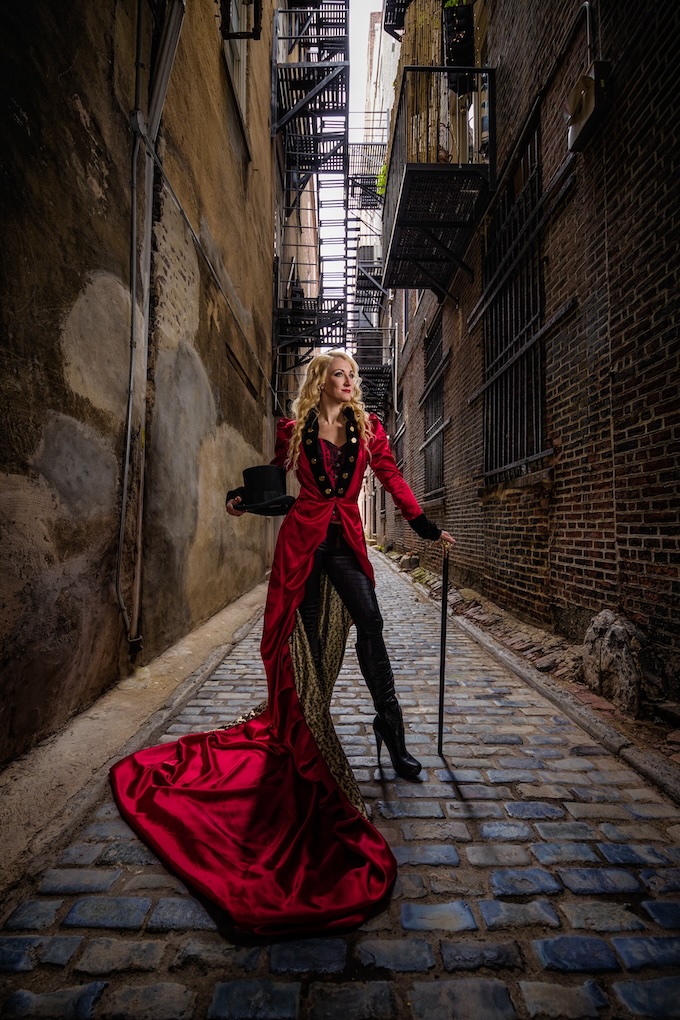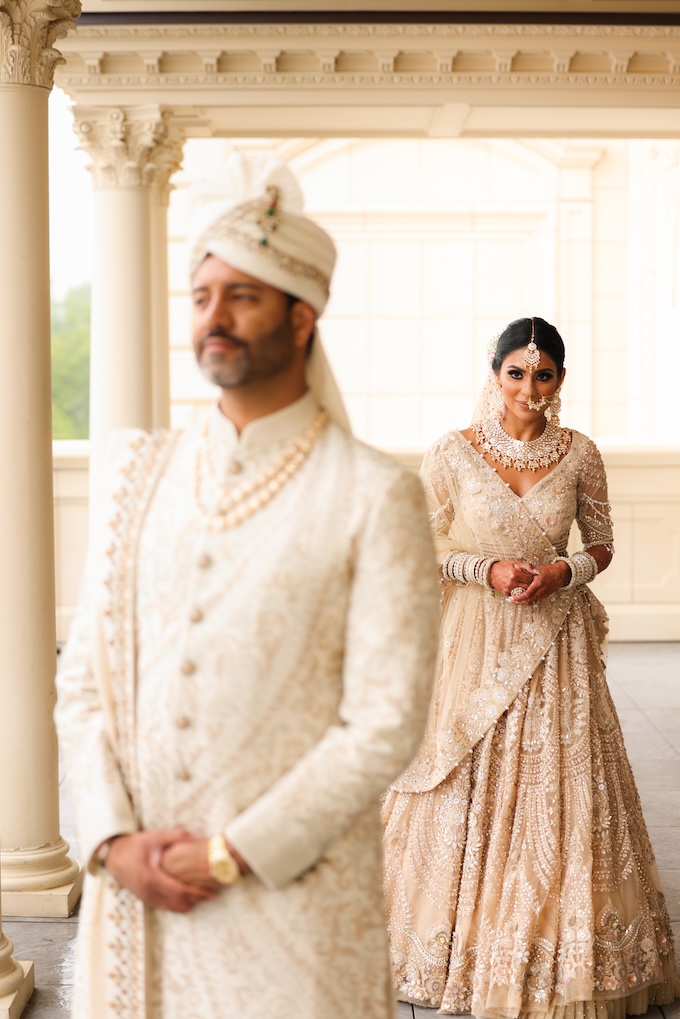Wedding + Portrait
Photo Trend Alert: Layered Images
May 4, 2023
A certain kind of wedding image has been catching our eye more lately with its enigmatic vibe and unexpected elements. It’s a layered photo where the subject is seen through a foreground object, a reflection in glass, or even something that wasn’t in front of the camera at all. We talked to a couple photographers who have been making layered images for years about why they’re worth a little extra work.
“I’m trying to achieve magic, basically,” explains Noa Azoulay of Feather Love. The Oklahoma City–based photographer was first inspired to experiment with layering by movies and record album art. She shoots through everything from plants and fabrics to window reflections and old CDs to bring both context and a sense of removal from her subjects into the scene.

“Putting layers between my subject and I,” she explains, “pushes me and my ego out more and allows for something else to come in, something that I can’t predict.” In a digital world that offers image makers a high level of control, experimenting with layered images in-camera can introduce an element of chance and serendipity.
Azoulay sees the happy accidents that juxtapositions can bring as a tool to help artists develop their own distinct style. “Anything you’ve grown from in life is by things that happen to you that you didn’t expect,” she says. “If you’ve expected everything, then you’ve never grown.”

Shooting from behind foreground elements can also create a subtle thrill of discovery by reminding viewers that they’re looking in from outside the scene. “I feel like I’m getting to observe the character of the subject way more than if it was just me and the camera, without anything between us,” says Azoulay. It’s a device that works well for wedding portraits by underscoring the intimacy of the moment.
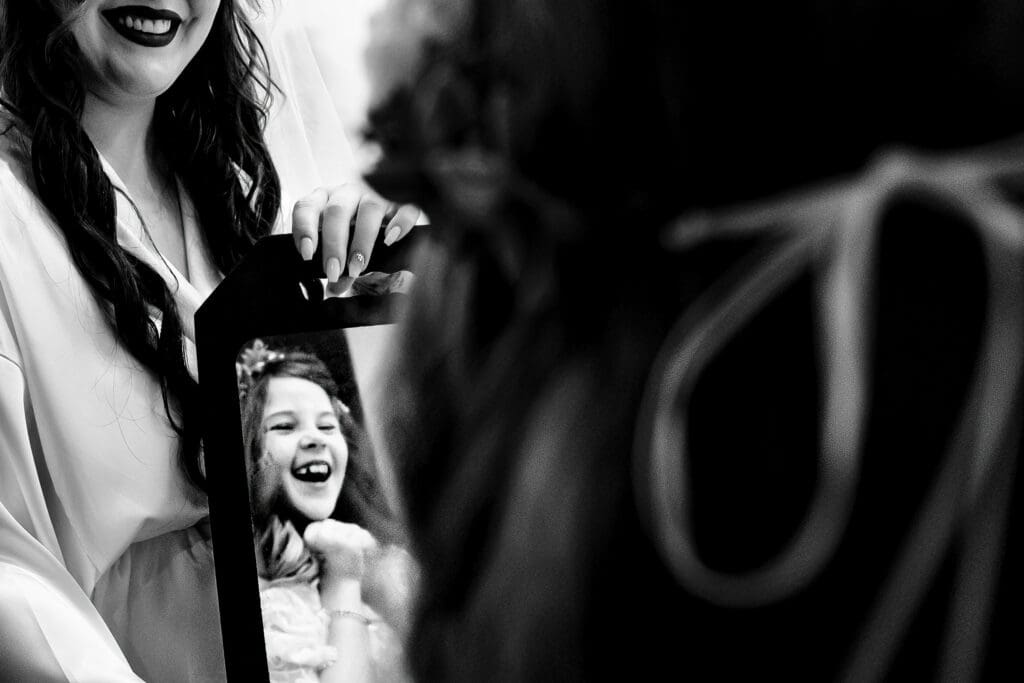
As Raleigh-based Elyssa Kivus of Kivus & Camera points out, layering images is also an effective storytelling technique. “My background is in journalism,” she says, “so I’m always looking for ways to tell the story in a more complex way.” She does it in camera by shooting through reflections or foreground objects, or including mirrors in the frame, and she also creates composites.
Kivus keeps an eye out for interesting elements that she can photograph slightly out of focus, composing her shot so that it can be used as a foreground layer. “Later on in the day, when I have time with just the couple,” she explains, “I’ll be able to photograph them in a way that I can combine those two images.”

When she’s creating a layered image in-camera, Kivus sometimes lights foreground elements or subjects, and even adds gels to bring in color or warm up foliage. In the image shown here, Kivus photographed the couple through the windows of adjoining rooms, with each person lit separately. The lighting allowed Kivus to capture both the couple and the reflection of the mountains behind her.
Her lighting also serves a narrative purpose. “The more layers of storytelling you have, the more important it is to guide your viewer’s eye to what it is you want them to see first,” she says. “And that’s where light comes into play. You want to make sure that the brightest part of the frame is where you want your viewer’s eyes to go first.”
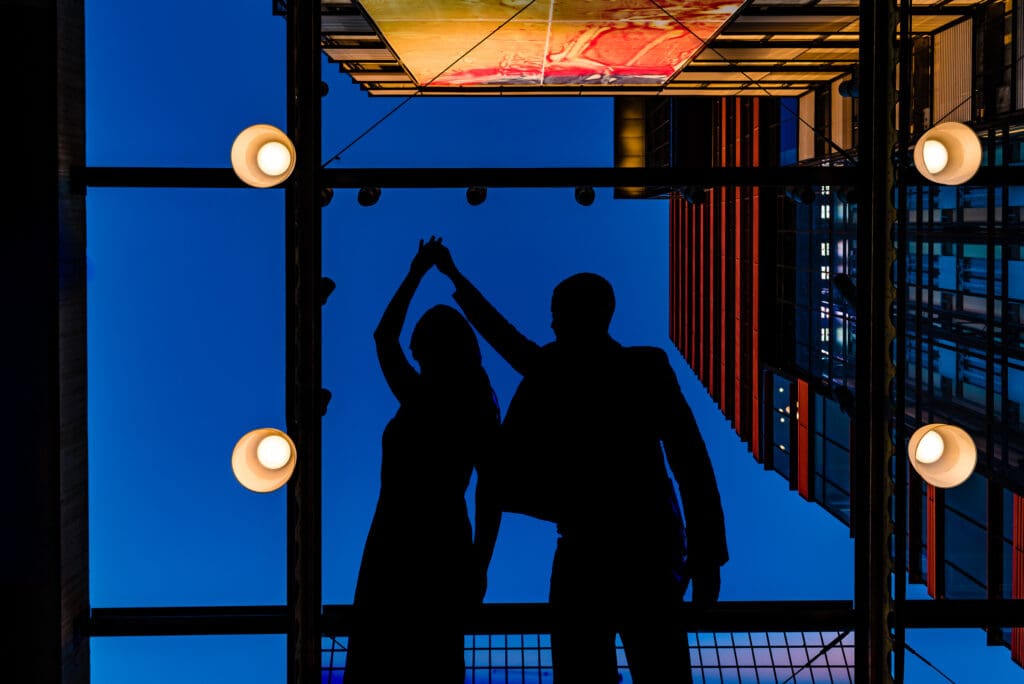
So will the layered look’s current popularity carve out a permanent spot for it in wedding shooters’ repertoires? It probably depends on your clientele. If you’re like Noa Azoulay and Elyssa Kivus, with clients who come to you for creative experimentation and bold aesthetic choices, the answer is likely yes. “If you like bright color, you tend to also like bright patterns,” says Kivus. “You like a visual feast, and layered images and complex images and things with reflections are like a visual feast.”

